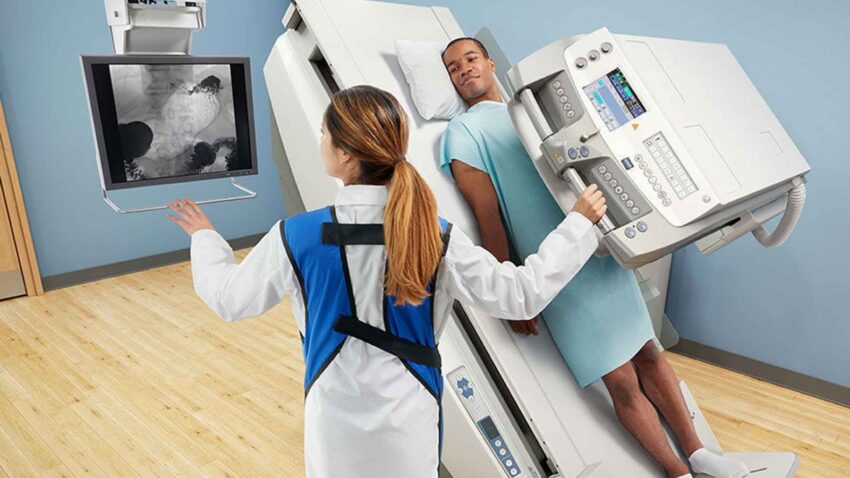Fluoroscopy devices are X-ray based medical imaging techniques that enable real-time visualization of internal organs, soft tissues, and blood vessels. Various types of fluoroscopy devices are available that include fixed C-arm fluoroscopy systems, mini C-arm fluoroscopy systems, and fluoroscopy systems. Those devices are commonly used in interventional radiology, cardiology, urology, gastroenterology, and orthopedic surgery to perform a variety of minimally invasive procedures and surgeries. Advantages of using fluoroscopy include reduced surgery time, less invasive procedures, faster recovery, and improved clinical outcomes. Therefore, fluoroscopy devices are widely adopted in hospitals and ambulatory surgical centers for diagnosis and treatment of various chronic and acute conditions.
The global fluoroscopy devices market is estimated to be valued at US$ 5437.8 Mn in 2023 and is expected to exhibit a CAGR of 4.2% over the forecast period 2024 to 2031, as highlighted in a new report published by Coherent Market Insights.
Market Dynamics:
Increase in the Prevalence of Chronic Disorders: Chronic diseases are long-lasting health conditions that require ongoing management such as cardiovascular diseases, cancer, chronic respiratory diseases, and diabetes. According to the WHO, chronic diseases are estimated to account for over 70% of all deaths globally. Fluoroscopy enables minimally invasive diagnosis and treatment options for many chronic conditions thus driving the demand for fluoroscopy devices.
The adoption of minimally invasive procedures: Minimally invasive surgeries are associated with benefits such as smaller incisions, less pain, reduced scarring, shorter hospital stay, and quicker recovery time in comparison to traditional open surgeries. The growing preference for minimally invasive options among patients and physicians is propelling the demand for fluoroscopy devices as they are crucial tools that enable real-time imaging guidance for such procedures. Various public and private initiatives are also being taken to raise awareness about minimally invasive options.
Segment Analysis
The global fluoroscopy devices market is segmented based on product, application, end user. Based on product, the market is segmented into fixed C-arms, fluoroscopy systems (remote controlled). The fluoroscopy systems (remote controlled) segment is dominating the market. Remotely controlled devices allow clinicians to operate and monitor fluoroscopy systems from a protected position, thus minimizing radiation exposure.
PEST Analysis
Political: Governments across countries are framing favorable regulations to ensure access to advanced healthcare technologies. However, stringent regulations pertaining to radiation safety is a challenge for market players.
Economic: Growing healthcare spending coupled with demand for minimal invasive surgeries is fueling the market growth. However, high installation and maintenance cost of these systems is a restraining factor.
Social: Rising geriatric population suffering from chronic diseases and injuries is driving the demand. However, issues related to radiation risks associated with prolonged usage hampers the market growth.
Technological: Ongoing R&D for technological advancements such as AR/VR enabled systems, flat panel detector (FPD) technology is supporting the market growth. Integration of AI for improved imaging is also gaining traction.
Key Takeaways
The Global Fluoroscopy Devices Market Growth is estimated to be valued at US$ 5437.8 Mn in 2023 and is expected to exhibit a CAGR of 4.2% over the forecast period 2024 to 2031.
North America region is expected to dominate the market during the forecast period. Factors such as well-established healthcare infrastructure, rising geriatric population base coupled with chronic diseases prevalence, high awareness about the benefits of minimally invasive surgeries are supporting market growth in the region. The U.S. dominates the North American market accounting for the largest revenue share.
Key players operating in the fluoroscopy devices market are Kemira Oyj, ION EXCHANGE (I) Ltd, Thermax Ltd, BASF-SE, GE Water & Process Technologies, Dorf Ketal, Chembond India Ltd, SNF Group, Vasu Chemicals, E. I. du Pont de Nemours and Company, Shandong Taihe Water Treatment Technologies Co., Ltd., and Shandong XinTai Water Treatment Technology Co., Ltd. Key players are focusing on new product launches, geographical expansion and mergers & acquisitions to strengthen their market position.
*Note:
1. Source: Coherent Market Insights, Public sources, Desk research
2. We have leveraged AI tools to mine information and compile it

